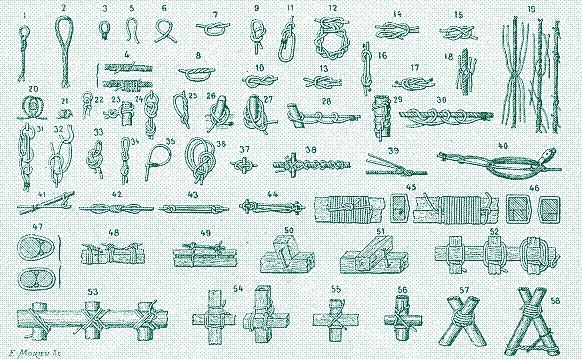
The sheer number and diversity of knots that was once in use would be bewildering to the modern city-dweller. About 4,000 different knots are described, ranging from the very simple to the extremely complex.
Not so long ago, each profession or trade had adopted the knots best suited to its requirements, and knotting was part of their daily lives. There are some good knotting reference books available online, and all of them are older than most of us.
Knots can be subdivided according to their general purpose: to attach a rope to another rope (fastening knots), to attach a rope to an object (hitches), to shorten a rope without cutting it (shortening knots), to form an enlarged end on a rope (ending knots), or to attach two rope ends together in such a way that they represent a smooth and even surface (splices).
In addition to these practical knots, there are many kinds of fancy knots used in ornamenting the ends of ropes, decorating shrouds of vessels, railing and similar objects (which will not be covered here). Below I will outline some basic knots and highlight remarkable examples of this technology.
Basic knot technology
Desirable features of most knots are that they may be quickly tied, easily untied and will not slip under strain. A number of terms are generally used when tying knots. The “standing” part of a knot is the principal portion, or longest part of the rope.
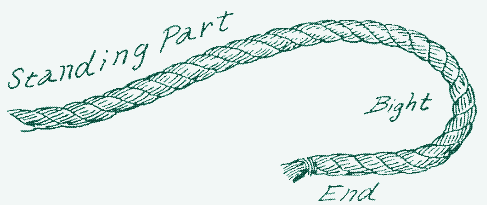
The “bight” is the curved part, looped or bent while working or handling the rope in making the knot, and the “end” is that part used in forming the knot or hitch. All knots are begun by loops or rings known to mariners as “cuckolds’ necks”. These may be overhand or underhand. If the loose end of the rope is passed over the standing part and through the cuckold’s neck, the simplest of all knots, known as the “overhand knot” is made.
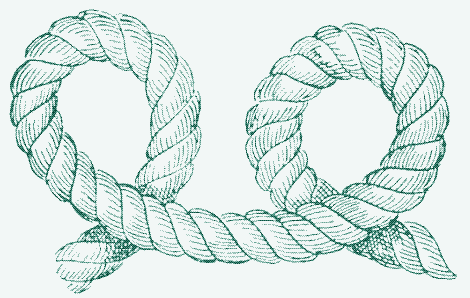

Fastening knots
With a bit more sophistication, much better knots can be made. The “figure eight knot” (commonly used to prevent a rope from running through an eye or ring or tackle block) is almost as simple as the overhand knot, and only a step beyond this is the “square knot”, which is one of the best all-round knots known. It is very strong, never slips or becomes jammed when being strained, and is readily untied. Beware of the “granny knot”, though, which looks very similar but is utterly useless. In spite of its versatility, however, the “square knot” is not always ideal.
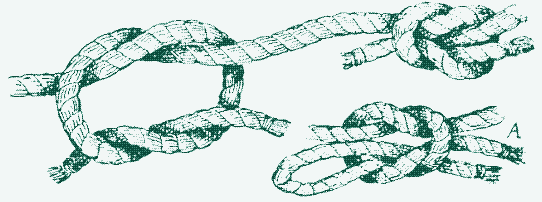
For example, it is not reliable when joining two ropes of unequal size together, because they will slip. In this case, the “open-hand knot” can be used. In joining small lines, the “weaver’s knot” is the best option, while the “fisherman’s knot” is valuable when it is important that the two lines may be drawn apart with just one pull.
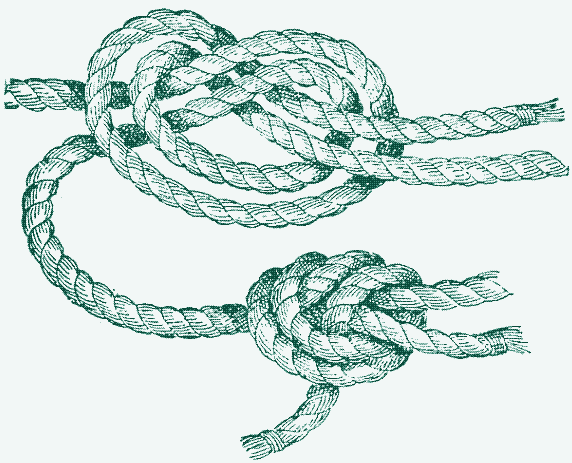
The “hawser knot” is the best to use when joining two stiff and heavy ropes and the “bowline knot” comes in handy to tie a horse or cow so that they will not choke themselves. For every possible application, our ancestors seem to have developed a suitable knot. Tools to be used in tandem with knots also exist: in a number of cases a toggle is used either to aid in making the knot or make it easier to untie it after a strain has been applied.
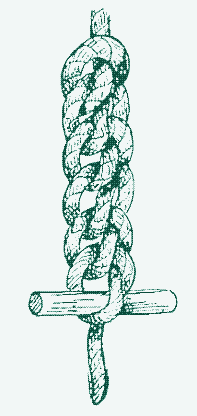
Two distinct types of fastening knots are “ending knots” and “shortening knots”. Ending knots prevent the rope from unravelling - some form of an “artificial eye” is one way to do that. Shortening knots are useful when the rope is too long and where it is awkward to have the free ends hanging loose, or where the ends are in use and the slack must be taken up in the middle of the rope. Both types come in a wide variety and are also used extensively for their ornamental value.
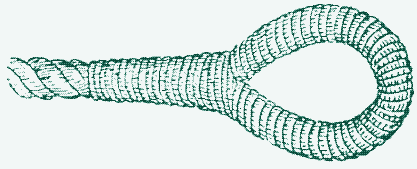
Splices
Thanks to knots, ropes can be made as long as you please - regardless of the length of the ropewalk. However, many times it is necessary to join two ends together in such a way that the union is as strong as the rest of the rope and still not too large and irregular to pass through a hole or pulley block.
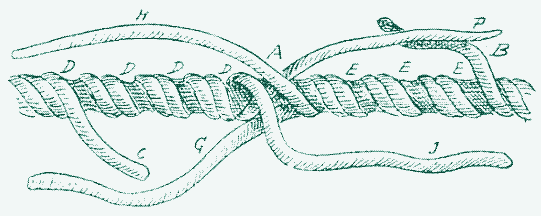
The method of joining two ropes to meet the above requirements is called splicing. There are two general types of rope splices, known as the short splice and the long splice. The long splice is preferable since it is stronger and does not increase the volume of the rope at all. A well-made long splice cannot be distinguished from the rope itself after a few days use. Splices can also be applied to steel “wire ropes”.
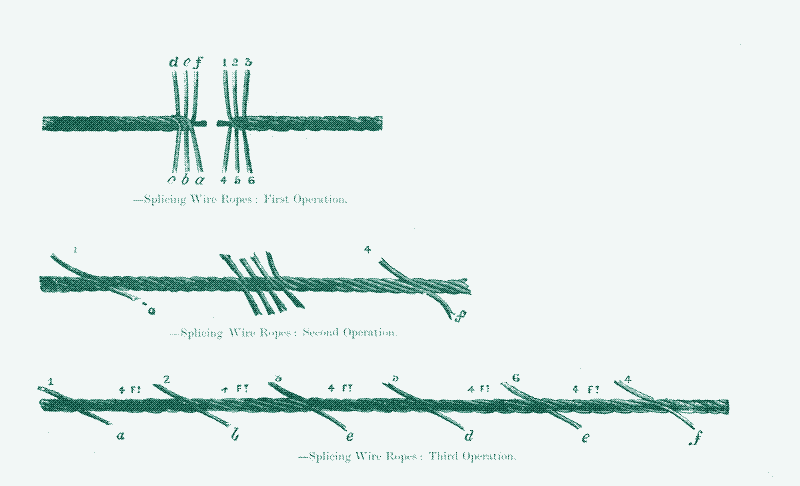
Hitches
When fastening a rope to a stationary or solid object, instead of fastening rope ends together, another class of knots used are called “hitches”.
The diversity of hitches is overwhelming, with each knot designed to meet some special requirements. Some are designed for fastenings where the pull is continuous, others were invented to hold without slipping on wet timber, and others serve extremely well when a knot should be easily untied. The pro’s and con’s of specific hitches can be crucial knowledge in pertinent situations. The “blackwall hitch”, for example, has the interesting property that it holds more securely the greater the strain is, but it is unreliable if the rope is slack.
Other hitches are especially designed for certain objects. The “catspaw” is useful for hoisting with a hook. Others are suitable to hoist an open barrel (“sling for a cask”), and others are used in hoisting pipe, where no special clamp is available for attaching the hoisting tackle to the pipe (“pipe hitch”).
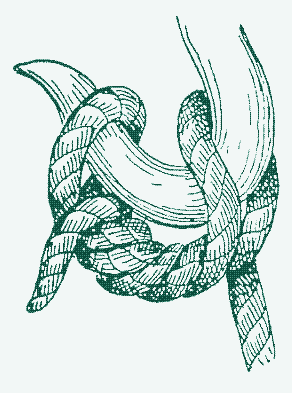

Handcuffs
There are hitches designed for attaching a rope to a ring, hitches used in tying up light packages, or hitches invented to form a seat for men to be lowered over cliffs or buildings. Many hitches will pull tighter the harder the strain, and are still easy to untie. The “tomfool knot” is used as a pair of very secure handcuffs. One of the most high-tech knots around is the “diamond hitch”, used to tie loads to pack animals. Full instructions of it can be found in this 1916 manual & this 1922 manual.
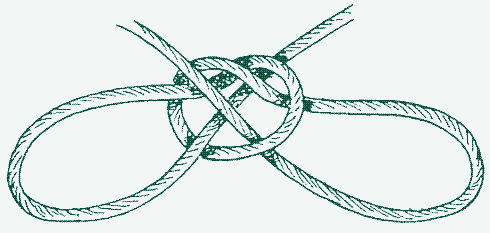
Knots (and ropes) are fast on their way to become an obsolete technology.
References
- Knots, ties and splices (1884)
- Knots, splices and rope work: a practical treatise (1917)
- The use of ropes and tackle (1922)
- The Ashley Book of Knots (1944)
- Knot charts (pdf)
- International Guild of Knot Tyers.
- Splicing wire ropes: 1 & 2.
- Also of interest: History and Science of Knots
, JC Turner & P van de Griend (1996). Free access in some libraries.